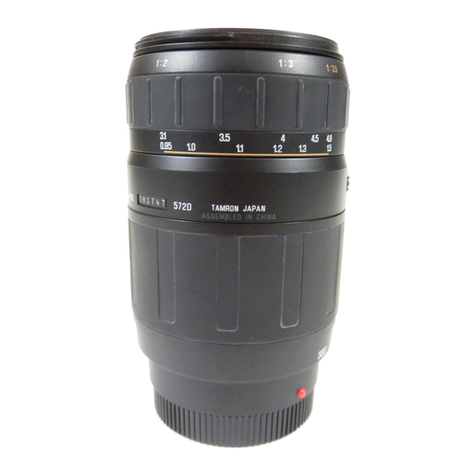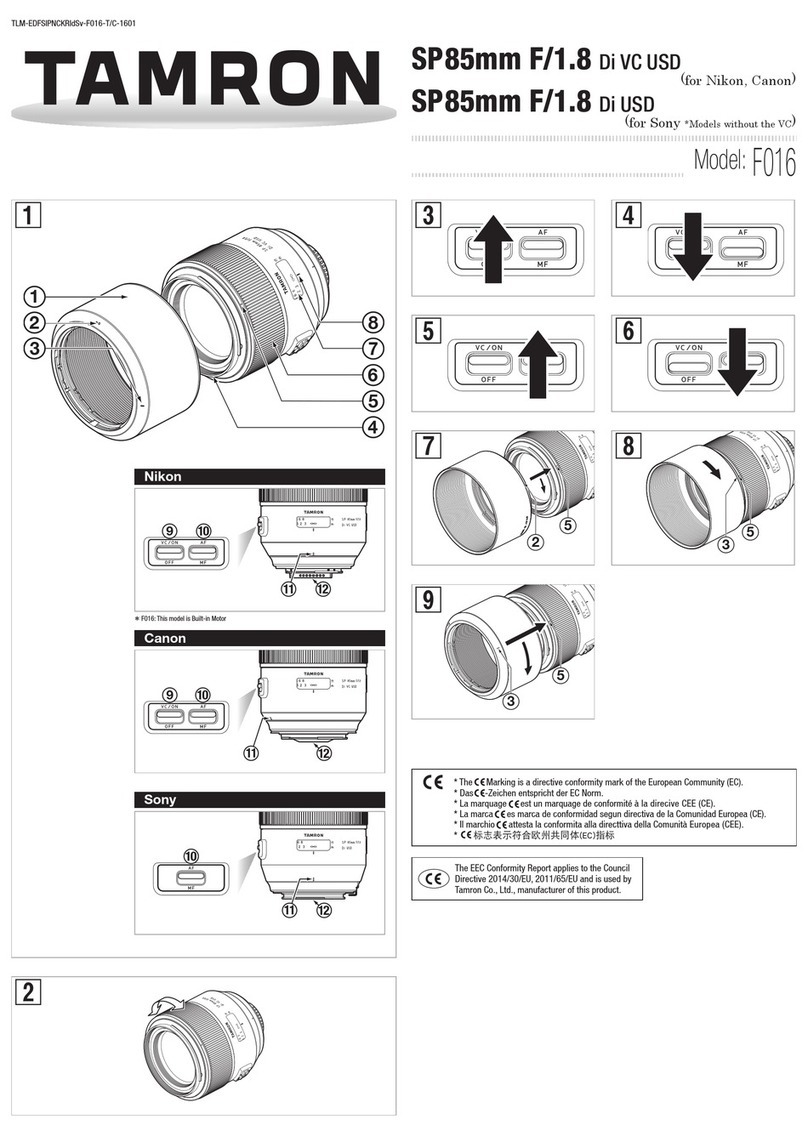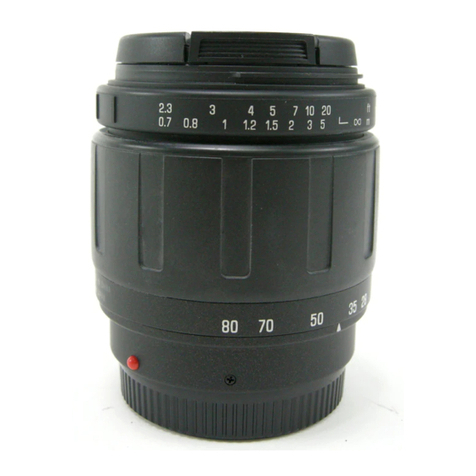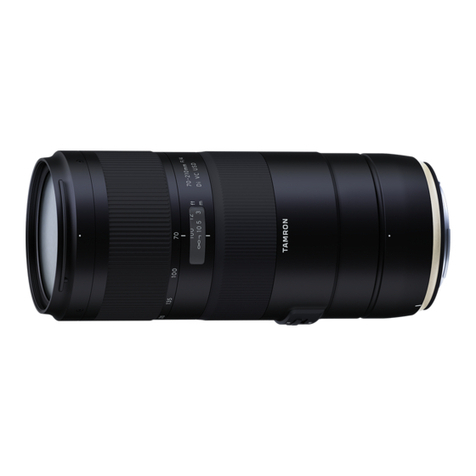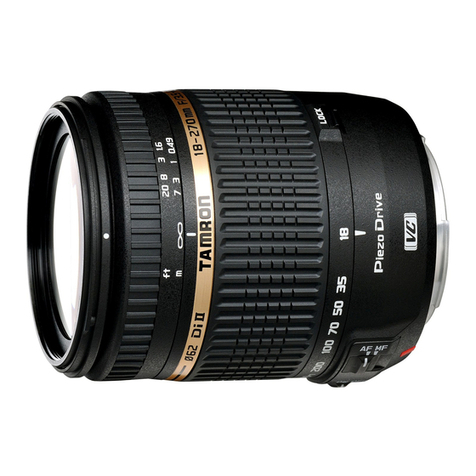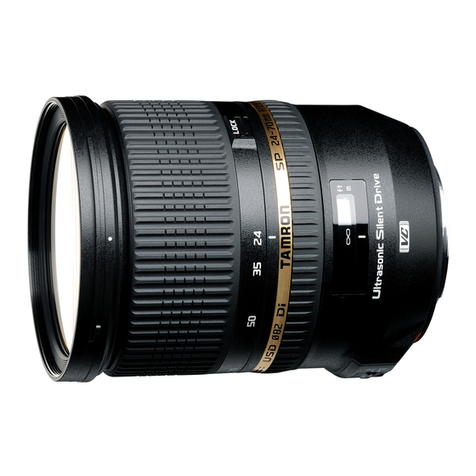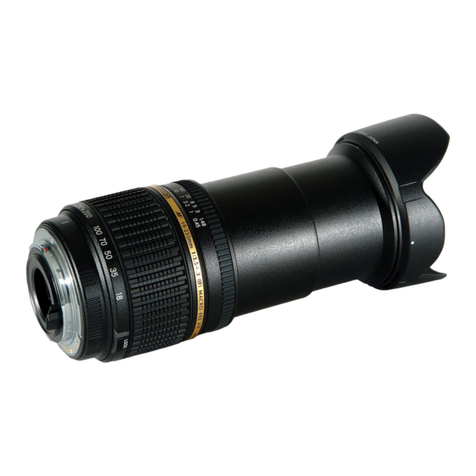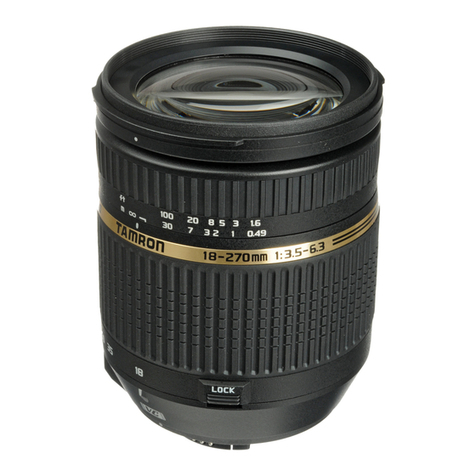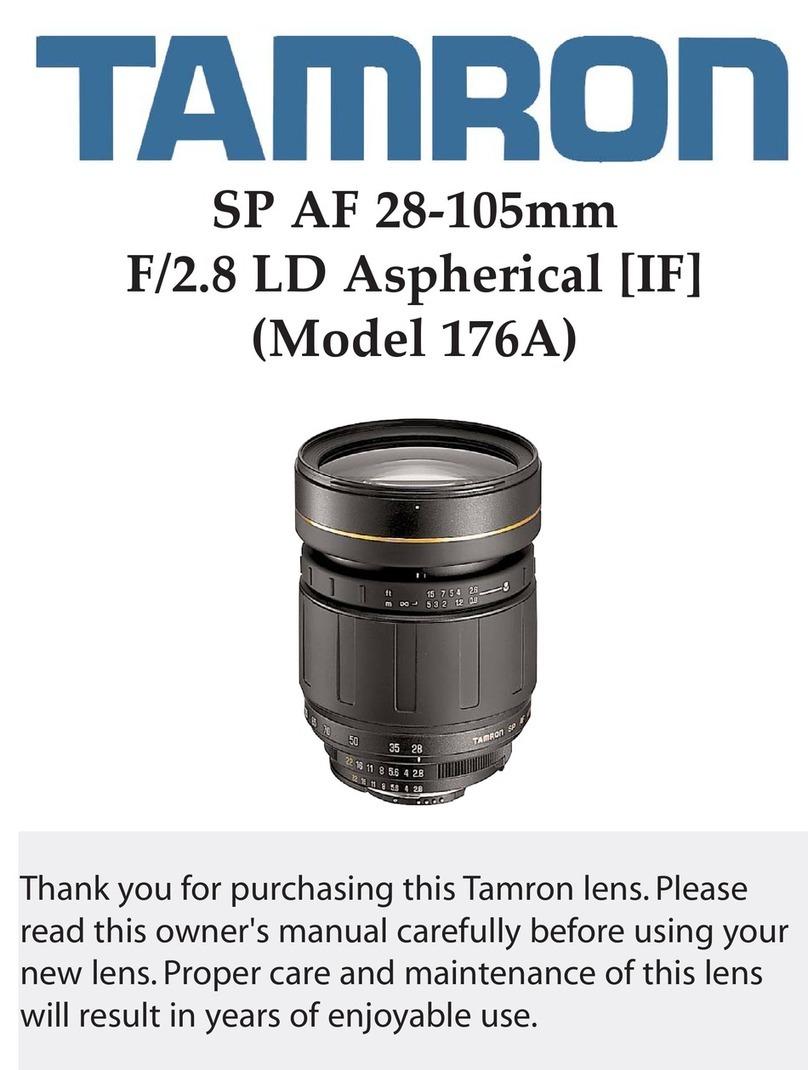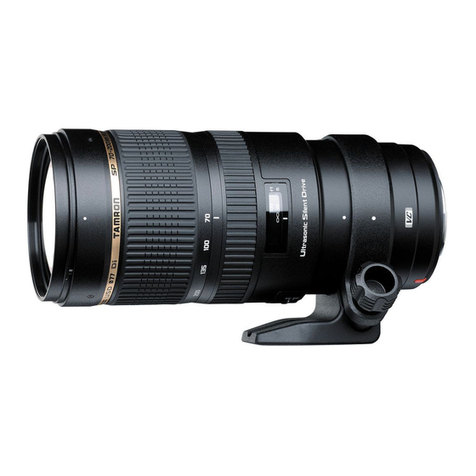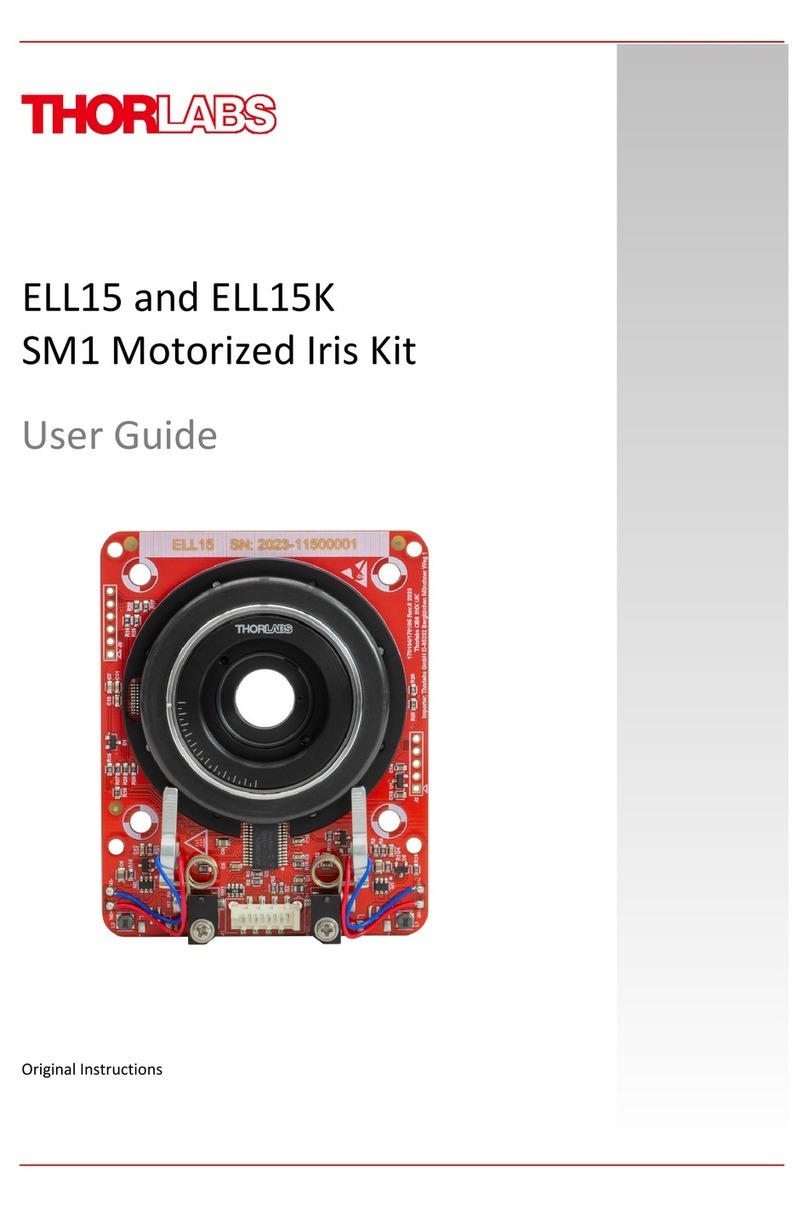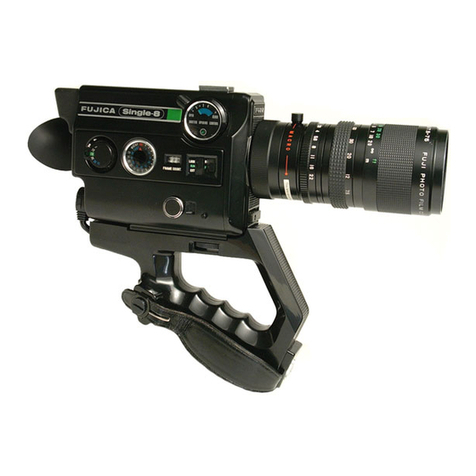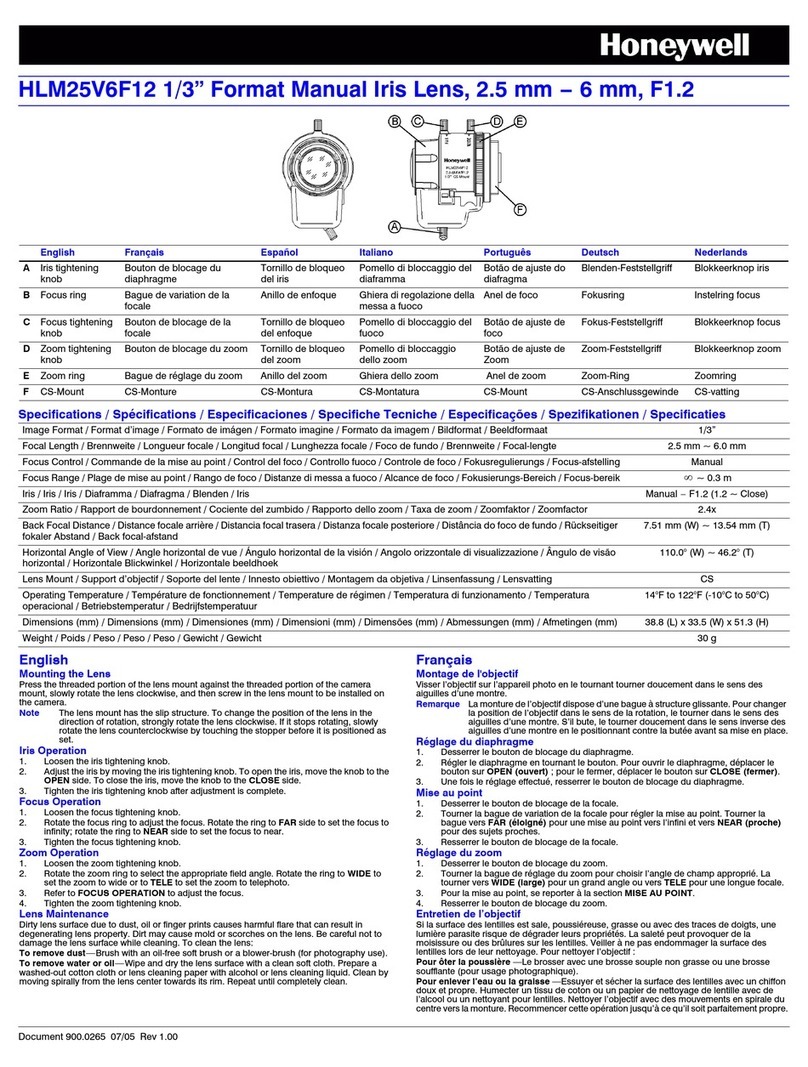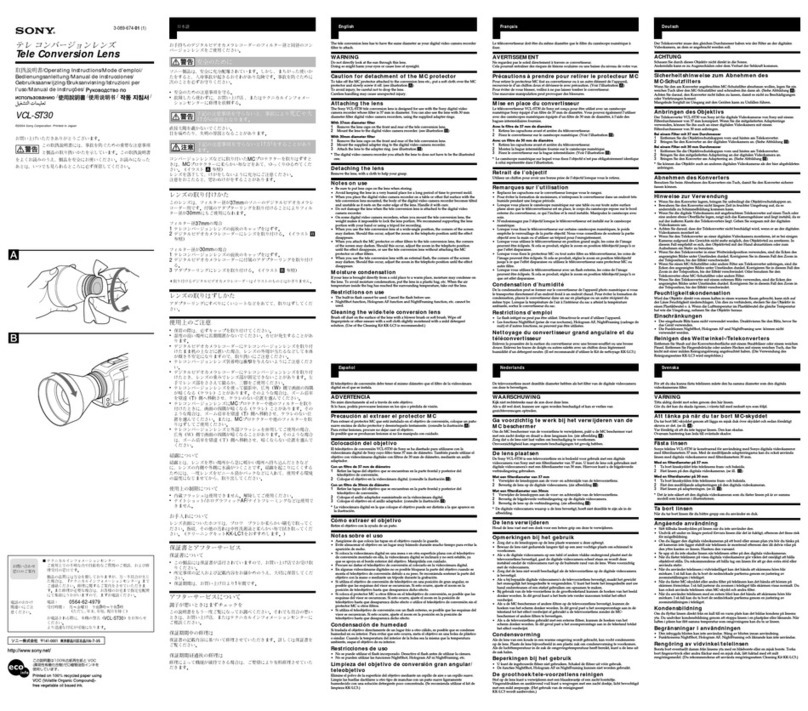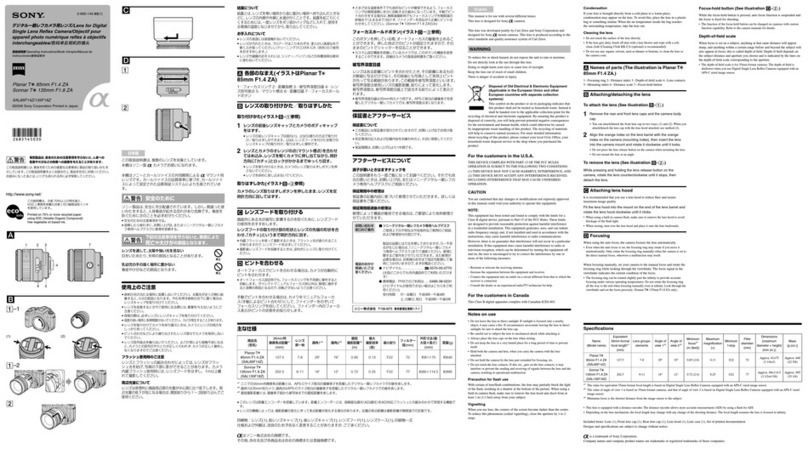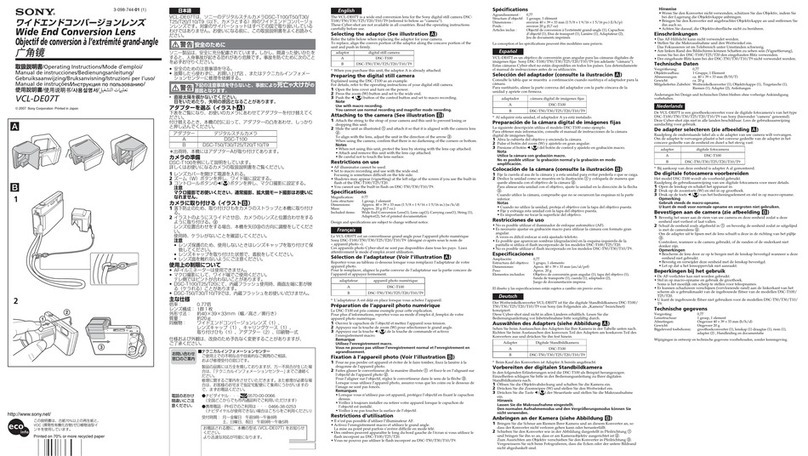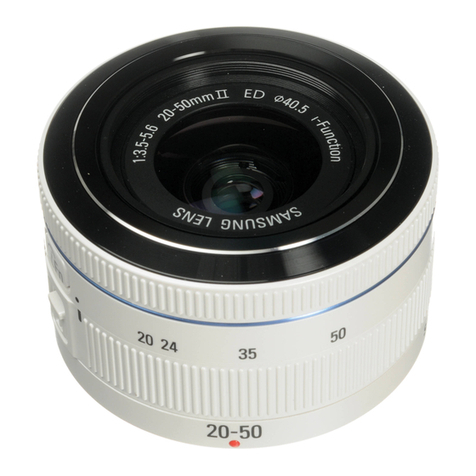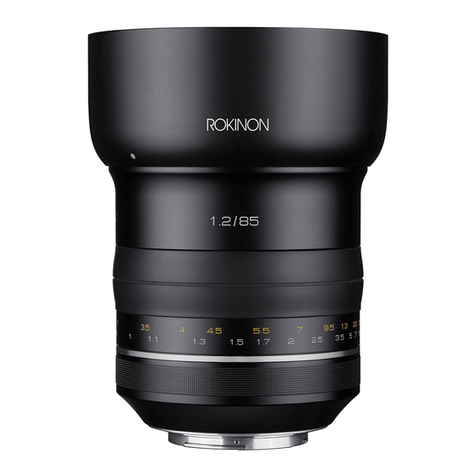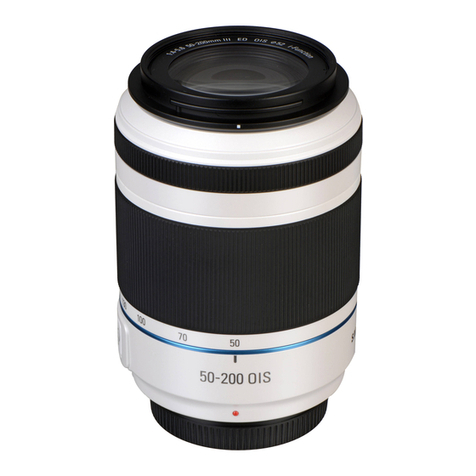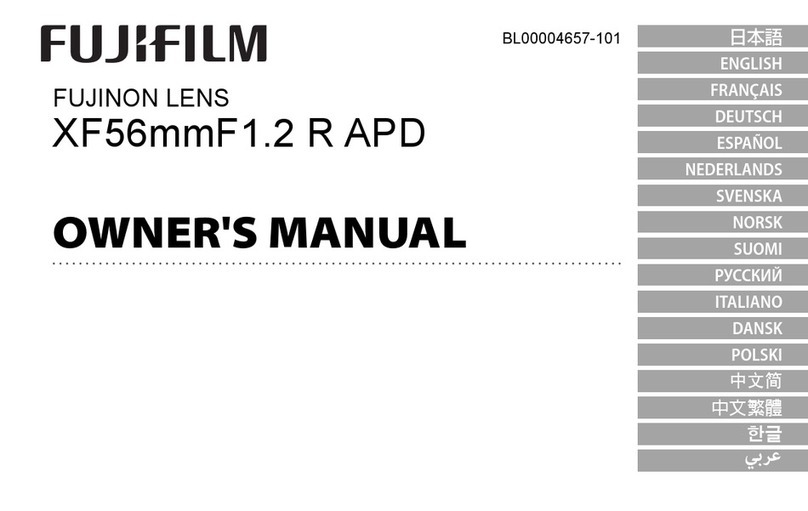
Stowing lens hood on the lens
Reverse the lens hood. Point the lens toward the opening, and then align the hood
attaching index on the lens with the “TAMRON O” alignment on the hood.
Turn the hood clockwise until the alignment mark is at the top to set it.
PRECAUTIONS IN SHOOTING
-The optical design for Di-II takes into consideration the various features of digital
single reflex cameras. However, due to the configuration of the digital single reflex
cameras, even when auto focus accuracy is within specifications, the focal point may
be a little forward or behind the optimum point when shooting with auto focus under
some conditions.
-The image circle of Di-II lenses are designed to match the digital SLR cameras using
the image sensors equivalent to APS-C (approx. 15.5x23.2mm). Do not use Di-II
lenses with cameras using image sensors larger than APS-C. Using Di-II lenses with
such cameras may cause vignetting on the image.
-The Tamron lenses described here emply an internal focusing (IF) system. Because of
the characteristics of this optical design, the angles of view at distances other than
infinity are wider than that of the lenses applying an ordinary focusing system.
-When the built-in-flash on the camera is used, adverse photographic phenomena such
as corner illumination fall-off or vignetting at the bottom part of the image may be
observed, especially in wide angle ranges. This is due to the inherent limitation of the
coverage of the built-in-flash, and/or the relative position of the flash to the edge of the
lens barrel which causes shadows on the image. It is strongly recommended to use a
suitable separate flash unit provided by the camera manufacturer for all flash p
hotography. For further details, please read the “built-in-flash” article on the instruction
manual of your camera.
-When using the lens in the telephoto focal range, please be careful of camera shake.
To reduce blur, turn the VC (Vibration Compensation) switch on. To reduce image blue
without using the VC function, follow these steps.
To avoid camera shake on digital cameras, use higher ISO settings and for film
cameras, use higher ISO film to obtain higher shutter speeds. Using a tripod or
monopod is also effective.
When hand-holding the camera to take pictures, stand still opening your legs slightly
apart, hold your elbows in firmly against your chest, and hold the camera firmly
against your face. If possible, lean against something to steady yourself or place the
camera on something to secure the hold. Especially when hand-holding your camera,
you will be steadier if you hold your breath while your press the shutter button down
gently and firmly.
-When set on AF mode, interfering with the focusing ring may cause serious damage to
the lens mechanism.

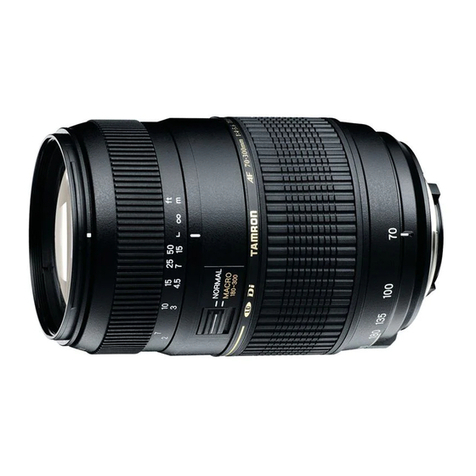
![Tamron SP AF70-200mm F/2.8 Di LD [IF] Macro User manual Tamron SP AF70-200mm F/2.8 Di LD [IF] Macro User manual](/data/manuals/22/5/225xu/sources/tamron-sp-af70-200mm-f-2-8-di-ld-if-macro-camera-lens-manual.jpg)






